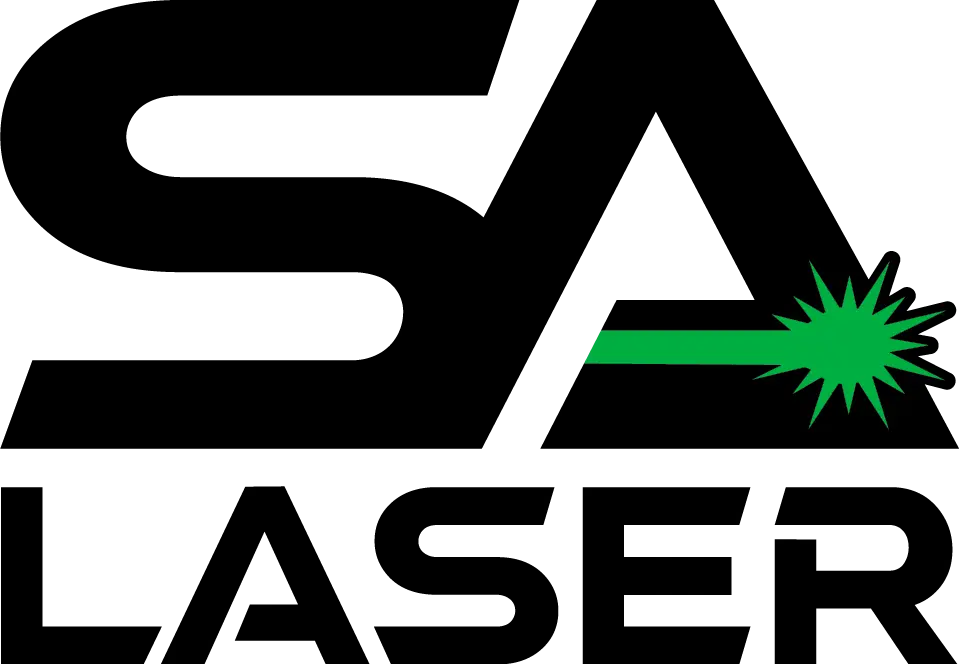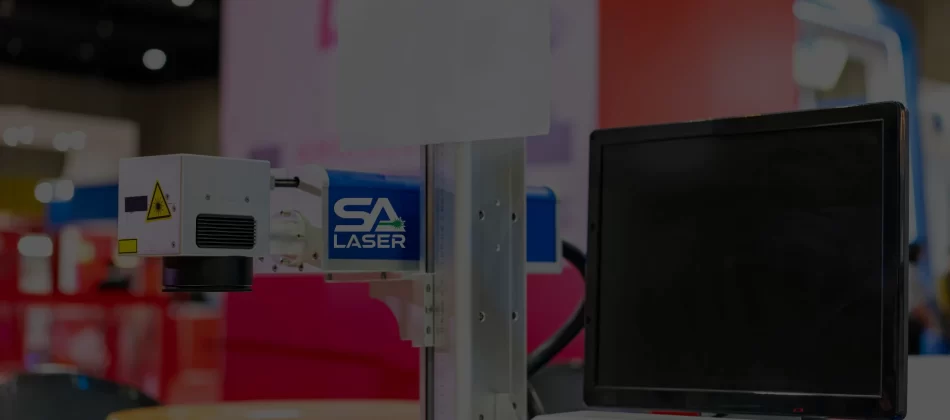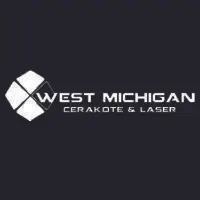







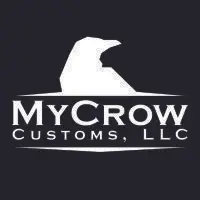
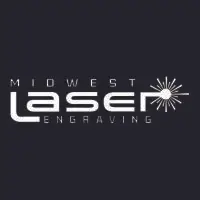









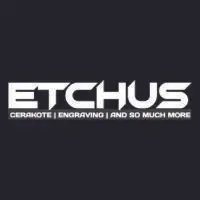
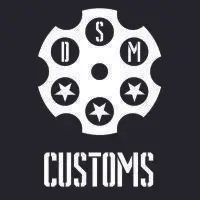



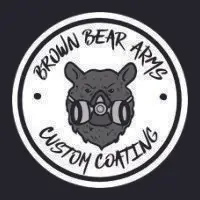

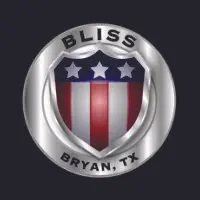
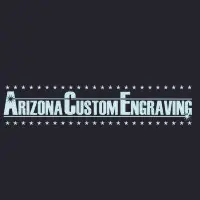




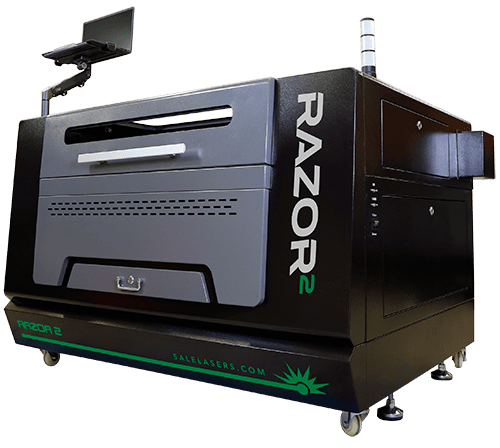
































































The CO2 laser engraving machine can be used for cutting wood of any kind, especially plywood and medium-density fiberboard (MDF).
Cutting and engraving on paper-based materials is also an area of CO2 laser cutter application. You can cut cardboard boxes and make decorations on paper and cardboard.
Access to 24/7 technical support from your CO2 laser trainee is of the utmost importance. The CO2 laser engraving machine is a complicated technology; not everyone knows the appropriate maintenance and fixing measures.
Opting for a CO2 laser trainee in the USA or anywhere close to you would be best. For US-based engravers, San Antonio Laser is one of the best laser companies in the country, offering intensive training to enable you to kickstart your business as soon as your training ends.
The CO2 laser engraving machine can cut plastic, cardboard, or wooden displays. You can also use it to personalize belongings such as gadgets, pieces of jewelry, wine bottles, etc.
People have different reasons for buying a laser engraving machine and undergoing training to familiarize themselves with its usage. Some are into or about to start the laser engraving business, while others are much more interested in getting a hobby engraving machine for use at home.
Whichever one it is, San Antonio Laser vends different kinds of engraving machines, with training prices inclusive. You can purchase a laser without the training or pay for the training without buying a laser. Still, it is advisable to opt for the training with SA Laser as it comes with many benefits, including access to industry experts to help you get through the process.
Your budget is an important part of this conversation as it determines whether you can purchase a San Antonio CO2 laser machine made in the USA alongside paying for the training. The average San Antonio CO2 laser engraving machine and training price attached is about $17,900.
It would be best to opt for the training while purchasing the machine. San Antonio Laser offers a 5-day comprehensive hands-on CO2 training to help prepare you for your business. You also don’t have to worry about after-purchase support with this company.
Access to 24/7 technical support from your CO2 laser trainee is of the utmost importance. The CO2 laser engraving machine is a complicated technology; not everyone knows the appropriate maintenance and fixing measures.
Opting for a CO2 laser trainee in the USA or anywhere close to you would be best. For US-based engravers, San Antonio Laser is one of the best laser companies in the country, offering intensive training to enable you to kickstart your business as soon as your training ends.
Knowing how long your training will last and what you should be able to achieve from it is a significant factor you should not ignore. It is expected that at the end of your training, you should be ready to hop on any CO2 laser engraving task that comes across you.
San Antonio Laser’s CO2 training does that for you. The in-person 5-day intensive training course covers set-up, calibration, advanced laser techniques, and material samples so you can get some repetition on burning with the laser. With this training, you don’t have to wait months to start making money from engraving.






























Acquiring a laser engraving machine made in the USA that you can not afford will leave you in long-term debt. Your budget is a determining factor in the size and model of the laser machine you can purchase. While the cost of the device does not indicate its quality, your budget is only a significant decision-making factor.
If you are looking at owning a laser cutting machine that can engrave on various materials, you should expect to spend a little extra money. There may be less expensive options, but they may not come with a complete package, or they may consume more energy and power, making them much more expensive to maintain.
Engravers working with metals, stainless steel, plastics, wood, leather, glass, etc., will need different laser engraving machines. For instance, an engraver that needs to cut thicker materials should opt for a CO2 laser since it delivers faster initial piercing times when compared to Fiber lasers.
You should also consider the area you are working on since some engraving machines can work on large spaces while other laser cutters can only work on smaller areas. Depending on your needs—professional or personal—it would be a bad idea to purchase a professional laser cutter instead of a hobby engraving machine for personal use and vice-versa.
After looking at your budget and knowing the type of machine you want to purchase. Different factors influence the accuracy of an engraving machine, including the following:
This is a crucial factor to consider when purchasing an engraving machine. You need to know whether maintaining the laser engraving cutter is something you can do by yourself or hire an expert technician. It is a total waste of money, time, and effort to buy an engraving machine that you will discard a few years from when you made a purchase.
Many people focus more on the price of an engraving machine than its quality, cost of ownership, and longevity. Consider buying a laser cutter as a long-term investment, not a quest for the cheapest device on the market. Weigh the actual cost of a laser not just by the cost of ownership but over its total working lifetime, which should be about ten years for a good laser.
When choosing a company to purchase laser engraving machines from, it is important to go with an organization offering high-quality laser systems, excellent training, and accessible technical support for their customers.
If you are in the United States, buying a laser engraving machine made in the USA should be a priority. Speaking at her interview with SA Laser, Amanda, a satisfied trainee who spent only 4 days acquiring laser engraving skills, said, “it was really important to me to have a US-based laser company, that way, they will be with me throughout my process.”
SA Lasers is the leading laser machine manufacturer and trainer in San Antonio. Amanda went ahead to share how she gathered the skill at SA Lasers to engrave on various material types.
Whether through calls, live chat, emails, or even on-site, ensure that your chosen laser company has reliable technical support available if something is wrong or needs troubleshooting by having someone who can answer your questions efficiently.
After figuring out your budget, customer support, and all the important properties you need from your device, you should go ahead and look at the engraving machines’ relevant specs. If you are working with metals or reflective surfaces, you need to get a fiber laser cutting machine. However, if you work with nonmetals, go for CO2 laser engravers.






























A CO2 laser engraver is a machine that creates designs on various materials using carbon dioxide lasers. These systems are best for permanent and quality engravings on surfaces. The laser beam of the CO2 laser marking machine offers a low tolerance, which is not only more productive but also much more precise.
This system is more environment-friendly, other kinds of lasers can only convert a fraction of the power of your supply into photons, but a CO2 laser converts a large amount of the energy it consumes. This laser is excellent for many non-metallic materials, including textiles, plastics, glass, wood, acrylic, and stone.
A fiber laser engraver is a device that pumps light at the edge of the fiber optic cables, which then gives off a powerful laser beam. The light beam is useful in engraving designs or cutting shapes on different materials. Though fiber laser engraving machines are optimized for metal markings, they can be used to mark other materials.
Their power makes them ideal for engraving applications, but you cannot use them to mark transparent objects since IR (infrared) light passes through them. You can use fiber laser engraving machines to mark on aluminum, stainless steel, carbon fiber, metal-plated ceramics, nylon, plastics, magnesium, etc.
CO2 laser cutters have beam path maintenance such as lens cleaning, beam alignments, and bellows inspection. Fiber lasers, on the other hand, do not need much maintenance.
Jeremy Beasley—a San Antonio Lasers two-time trainee, shares his most exciting moments during the fiber engraving training in 2019 and the CO2 training three years later. A few years into running his company, Jeremy realized that his business needed a push as he could not provide some services that involved CO2 laser cutting.
Speaking in an interview, he said, “Fiber was a great place for me to start, but the more I got into it, the more I realized that I wanted to expand my abilities. CO2 is the logical path forward on that, and if I’m going to do CO2, I want to do it with a company that I trust–SA Laser.”
From all indications, a CO2 laser engaging machine is quite advantageous to fiber laser cutters due to the wide range of materials it can cut, its astonishing speed, and other essential factors.
What followed after Jeremy’s fiber laser engraving training with San Antonio Lasers is continuous business growth, and he is excited about taking another training. Besides earning the ability to kick-start their business right after the training, each trainee gets plugged into SA Laser’s private network of experts and troubleshooters.
Being able to cover much ground is one of the reasons many San Antonio Lasers trainees opt for fiber and CO2 laser cutting training; it is enough to help you decide on upskilling with SA Lasers and buying a laser engraving machine made in the USA. In addition, a strong knowledge of fiber and CO2 laser engraving will help you to offer more services to a new audience outside your existing customer base.





























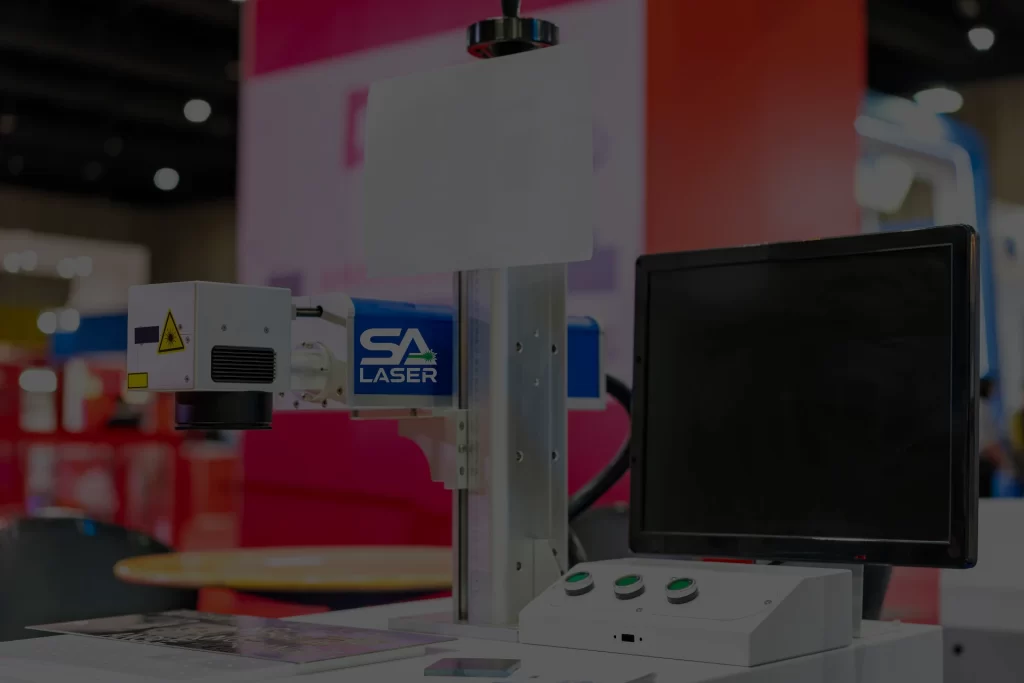
Fiber Laser engravers have made an impact on many industries for years, but the technology keeps improving, making it more accessible for industries to achieve clean engraving lines all with the power of light.
In this article, you will learn everything you need to know about fiber Laser engravers, from how they work to what materials they can engrave.
A fiber laser engraver is a tool used by craftsmen in several industries, proving its worth by engraving a smooth line that can be programmed into complex designs. (1) Fiber Laser engravers are most widely used by individuals working on metals or plastics, however, as these engravers are not suitable for carving most organic materials like wood, leather, or glass.
“[…] many maker companies know the value of a laser cutter or laser engraver.”
• Forbes
The word ‘laser’ itself is an acronym which can clue you into how it works: Light Amplification by Stimulated Emission of Radiation. Like a hand lens in the sun, this engraver takes light emitted from fiber optic cables and powers it into a heated beam that pinpoints each target point on a design, creating a complex and smooth engraving.
There is no set way to categorize different types of fiber lasers. One individual may choose to differ them based on the core size of the optical fiber or based on their mode of operation.
Different modes of operation change how the laser beams are released. Continuous-wave fiber lasers, for example, send a continuous beam of laser light through the machine, while pulsed fiber lasers, gain-switched or q-switched lasers may provide a pulsed beam at different powers and repetitions.
Core size determines how small or large the light size is within the machine’s optical fibers. Single-mode fiber lasers provide a smaller, more concentrated beam that is an average of 8.5 micrometers wide. Their counterpart, multi-mode fiber lasers, can produce a wider beam that is an average of 75 micrometers wide.
Single-mode fiber lasers are often preferred because of their ability to concentrate the beam more efficiently with better quality engravings, while larger beams can engrave larger areas faster, speeding up engraving time.
Another potential category is laser power, which determines how strong and how quickly the laser can engrave materials. These engravers most often come in retail increments of 20W, 30W, 50W, and most recently, 100W machines.
Fiber Laser engravers are often used for engraving names, sayings, and quotes onto pieces of metal. These engravers may be utilized for creating placards, or engraving jewelry like wedding rings and friendship necklaces.
Engraving ownership or brand information into electronics or other small items like metal tags and bands is also a common use so companies can manufacture branded goods.
Metals and non-transparent materials like plastics or carbon fiber are the best materials for these engravers, as the laser consists entirely of concentrated light. These lasers can engrave any type or shape of metal – rounded, flat, or concave – so long as it fits underneath the laser head safely.
You may have also come across another laser cutting tool during your research, a CO2 laser. Depending on which laser engraving machine you’re leaning toward it’s important to see the comparisons between the two. For a full in-depth detailed article on what materials they can cut, speed, cost, and much more, please click on the fiber-vs-CO2-laser engraving machine link after you’ve finished reading this!
Using a fiber laser engraver is not a difficult task but should be treated with caution. Like any other type of CNC machine or engraver, it should not be operated under the influence, and should only be used by trained personnel over the age of 18.
Operating a fiber laser engraver improperly can be hazardous to your health. You should always wear the appropriate clothes and eyewear, as well as keep anything loose away from the machine during operation, such as hair or jewelry.
Every fiber laser engraver should be operated according to the owner’s manual provided by the manufacturer. Depending on the model, manufacturer, and wattage, the operation steps may be different.
In most cases, several steps should be taken to avoid injury or unnecessary wear on the machine before and after operation:
These basic steps will ensure that the machine is operated safely, keeping personnel out of harms way and ensuring that the machine lasts as long as possible.
How Does Fiber Laser Technology Work?
Fiber Laser engravers contain a complex series of technological wonders that allows the fiber optic cables to refract as much light as possible into a carefully directed, concentrated beam.
The engraver machine is sectioned into three parts: the pump, the resonator, and the beam. These three sections are critical for any operator to know if you want to understand the basic inner workings of the machine.
The Pump Module
In the pump module, the laser beam begins its lifecycle. Here, a laser diode is nestled into the machine that emits a light.
Once emitted, the light must travel. This light passes through the fiber optic cables, generating a buildup of strong energy as it passes through the resonator module, until it eventually reaches the beam output which becomes visible to the operator as it engraves the material.
The Resonator Module
The resonator module is designed entirely to energize the light emitted from the pump module and strengthen the output.
Once the light travels from the laser diode, it enters passes through a fully reflective Bragg grating, then enters a gain medium, before traveling through a semi-reflecting Bragg grating.
In the gain medium, it is energized with additional photons and bounces back and forth between the mirrors so that it can generate an energy buildup in the line.
The Bragg gratings act as selective mirrors, with a fully reflective mirror ensuring that it the energized light does not travel in reverse, while the semi-reflective mirror controls the wattage that is eventually output for engraving.
Once the energized light builds up to a certain wavelength, it is released through the semi-reflective mirror and into the beam module.
The Beam Module
The beam module is the final step of the process. Here, depending on your customizations, this section may act differently. For a standard fiber laser engraver, however, the process is reasonably straightforward.
Once energized light that has reached the specified wavelength and passes through the semi-reflective mirror in the resonator module, it enters the delivery fiber. From this delivery fiber, it enters the laser head which concentrates the light into a single beam capable of engraving the materials on the surface below it.
Fiber lasers are not suitable for several types of organic materials because the light beam it transmits may pass through these materials or fail to engrave altogether.
In the case of glass at least, the beam of light passes straight through the transparent polymers and begins engraving the table underneath instead. The only way to get around this problem is to use a different engraver more suited to glass or add pigment to the glass so that the light cannot penetrate the material.
A popular use for fiber laser engraving is jewelry, where it has monumentally changed the industry. (2)
“One of the fastest growing technologies is the use of laser systems in Jewellry making as an alternative to the existing traditional methods of welding, engraving and cutting of metals.”
Now, with the help of this laser technology, jewelers can engrave, cut, and weld metals together with finer precision and cleaner lines.
Materials that are most suitable for fiber laser engraving include nickel, brass, aluminum, stainless steel, metal-plated ceramics, or steel. Plastics are also on the list of polymers that can be etched successfully with this type of engraver.
Before you choose a fiber laser engraver, consider what your needs are for the machines. How much material do you expect to engrave, and does it matter how long the engraving time is for each piece?
Size may also be something to take into consideration depending on the work environment. If you are working out of a home studio, a portable machine will give you the best range of options in the least amount of space. For larger companies with a dedicated workspace, however, it is ideal to have a full room for the machine and an enclosure to provide a safer work environment for the operator.
Depending on the manufacturer, you will be provided with different options to sort through. Fortunately, manufacturers are often willing to provide additional parts or customizations based on your needs if you ask.
A 20W laser engraver is best for shallow marking and designs but will not often be used for deep engraving or cutting. This wattage is also best for infrequent engravings where the items are not time sensitive, as they may take a while to complete.
A 30W engraver is the next step up and can provide better results for only a small uptick in price. This machine is still suited for shallow marking and designs but can perform the work faster and clearer engraving lines. It is common for individuals and companies to opt for a 30W machine for frequent or time-sensitive use.
50W machines are standard for harder materials, as the stronger wattage allows the beam to focus and penetrate harder metals better than a lower wattage. This machine can also perform some cutting on thinner materials. Despite the fact that these machines are better than 30W, it is not as common of a purchase for individuals because of the larger price tag.
If you intend to use the machine often, it may be worthwhile to opt for the 30W or 50W machine if you are looking for a more time-efficient cut with the same or better accuracy.
100W machines are not as common to come across on the market as they are relatively new compared to the other machines, but they engrave much deeper and can fulfill some specialty requirements.
A fiber laser cutting machine can vary greatly in price depending on the size and capabilities of the machine, and how recent the technology is compared to other models. The wattage of the engraver is the primary factor to consider in pricing the machine out.
If you choose a 20W fiber laser engraver, it is likely to run you anywhere from $2,900 to $6,000 USD. Likewise, a 30W will be more expensive, capping out closer to the $7,000 range.
For truly heavy-duty industrial purposes, a 1000W laser engraver can cost upwards of $90,000 for a single machine. For most purposes, however, this is an unnecessary amount of power; a 20W is perfect for most jewelry and soft metal engravings on a semi-regular basis, though it is common for companies to choose the slightly strong 30W machine.
A 20W fiber laser engraver is a powerful machine that can engrave just about any kind of luxury vanity material from marble and gold to aluminum and tile. 20W fiber lasers are the most popular and cost-effective machines for engraving metals.
Since each step up in wattage costs a pretty penny, it’s important to ensure that you can achieve the results you want with a 20W laser, or if you should move up to a 30W or 50W machine.
Engravers are most used to engrave jewelry pieces like rings and necklaces but may also be used for the creation of metal business cards, placards, and signposts. It may also be used to create custom designs in building materials like hard brick, granite, marble, tile, and aluminum.
The possibilities are nearly endless with a 20W engraver, and the machines are relatively small to accommodate small-space studios and workrooms.
Maintenance is an important part of keeping the fiber laser engraver in good working condition for years to come. This is especially true when working in extreme temperatures or if the machine is used frequently. Anyone operating the laser engraver should take careful note of its condition before and after use and maintain the machine as soon as possible if a problem is discovered.
Be certain to check the following:
Remember, never touch the beam and maintain a safe distance away with appropriate eyewear and protective gear when the machine is in operation. Additionally, never touch any of the optical lenses or reflectors directly, as they must remain free of debris to operate correctly.
Purchasing a fiber laser engraving machine is an important decision. Because these lasers are rarely offered as retail purchases in stores, it can be difficult to grasp the size of each machine and better understand its capabilities.
By doing your due diligence and learning about these machines, you will discover which fiber laser engraver is right for you based on your uses and space requirements.
Whether you are furnishing a metal shop, looking to include one at your jewelry repair shop, or seeking a laser engraver for personal use, a little extra research can go a long way to ensuring the machine is the right fit for your purposes.






























If you’re looking for a quick and efficient way to cut through materials like sheet metal, stainless steel, plastic and wood, you may be wondering how much a laser cutting machine costs. In this article, we’ll provide you with the cost of various machines so you can choose one that meets your needs. We’ll also answer other questions you may have: What is a laser cutting machine? How does a laser cutting machine work? Do you need to spend money on a high-watt laser machine? Types of laser cutting machines? How to determine what kind of laser you need? Advantages and disadvantages of buying a laser cutting machine?
A laser cutting machine is a tool that uses laser beams to cut through materials. The laser beam is generated by a laser source, which can be either a gas laser or a solid-state laser. Gas lasers use gas like carbon dioxide or nitrogen to create the laser beam, while solid-state lasers use a solid crystal or glass rod to create the laser beam. Laser cutting machines can cut through a variety of materials:
Laser cutting machines work by directing the laser beam at the material that needs to be cut. The laser beam is focused onto a small area of the material, and the heat from the laser beam melts, vaporizes, or burns away the material as it cuts through it. The laser cutting machine can either move the laser beam over the material or move the material under the laser beam.
There are three main types of laser cutting machines, CO2, Fiber, and Yag. If you are interested in a more in-depth comparison on fiber vs CO2 lasers, check out the hyper link! CO2 laser cutting machines: These laser cutting machines use CO₂ gas to create the laser beam. CO2 laser cutting machines are the most common type of laser cutting machine and can be used to cut through a variety of materials, including wood, plastic, and metal. Fiber laser cutting machines: These laser cutting machines use a fiber optic cable to create the laser beam. Fiber laser cutting machines are more expensive than CO2 laser cutting machines, but they can cut through thicker materials and can cut faster. YAG laser cutting machines: These laser cutting machines use a YAG crystal to create the laser beam. YAG laser cutting machines are the most expensive type of laser cutting machine, but they can cut through the thickest materials and can cut the fastest.
The type of laser you need depends on the material you plan on cutting and the thickness of the material. If you plan on cutting thin materials, like paper or cardboard, a CO2 laser cutting machine will be sufficient. If you plan on cutting thicker materials, like wood or metal, you will need a fiber laser cutting machine or a YAG laser cutting machine. If you’re in the market for a fiber laser engraver, we have training and machines available to purchase! Please click on the hyperlink for more information!
The cost of laser cutting machines varies depending on the type and wattage of the machine. CO2 laser cutting machines start at around $2000, while fiber laser cutting machines can cost up to $100,000. YAG laser cutting machines are the most expensive, with prices starting at $200,000.
Laser cutting machine prices can vary from manufacturer to manufacturer. In general, laser cutting machines made in China are cheaper than laser cutting machines made in the United States or Europe. Some of the popular laser cutting machines are:
These laser cutting machines are popular because they are made by well-known and trusted manufacturers. They are also popular because they offer a good balance of price and performance.
You can find used laser cutting machines for sale online, but you should be cautious when buying a used machine. Make sure to do your research and only buy a machine from a reputable seller.
A laser engraver is a type of laser cutting machine that is used to engrave images or text onto a material. What is engraving? Engraving is the process of carving a design into a material. Some enthusiasts will purchase a fiber laser engraver to as a hobby or to start a business. A laser cutter, on the other hand, is a type of laser machine that is used to cut through materials.
When buying a laser cutting machine, you should consider:
The amount of money you need to spend on a laser cutting machine depends on the wattage of the laser. The higher the wattage, the more expensive the machine. Laser machines with a higher wattage can cut through thicker materials and can cut faster than laser machines with a lower wattage.
You don’t necessarily need to spend money on a high-watt laser machine. It depends on the wattage of the laser, the thickness of the material, and the speed at which you need to cut.
There are both advantages and disadvantages to buying a laser cutting machine. Some of the advantages include:
Some of the disadvantages include:
There are many reasons why businesses need laser cutting machines:
If you are wondering whether you should buy a laser cutter or use a laser cutting service, there are a few things to consider:
Now that you know the cost of laser cutting machines and the advantages and disadvantages of buying one, you can decide if a laser cutting machine is right for your business. If you have any further questions about laser cutting machines, please contact us and we’ll be happy to answer them.






























If you’re in the market for a laser cutter, then you may be wondering about the differences between fiber lasers and CO2 lasers. Both have their advantages and disadvantages, so it can be tough to decide which one is right for you. In this article, we’ll take a look at each type of laser and explore what they’re best used for. We’ll also answer some common questions about fiber lasers and CO2 lasers so that you can make an informed decision when purchasing your new machine.
Fiber lasers are a type of laser that use a fiber optic cable to deliver the beam. The fiber optic cable is usually made of glass or plastic, and it can be either single-mode or multi-mode:
Fiber lasers are often used in industrial applications because they’re very efficient and can be used for a variety of tasks, such as cutting, welding, and marking. fiber lasers are also becoming more popular in the consumer market due to their versatility and relatively low cost. If you’re in the market for a new fiber laser engraver and want to learn about the different models we offer, and how you should approach purchasing one, please click here for more information!
CO2 lasers are a type of laser that uses carbon dioxide gas as the lasing medium. The CO2 laser is excited by an electrical current that passes through the gas, which then produces a beam of infrared light.
CO2 lasers are often used for cutting and engraving because they’re very versatile and can be used on a variety of materials. CO2 lasers are also becoming more popular in the consumer market due to their relatively low cost.
All lasers have three main components: an energy source, a lasing medium, and an optical resonator:
There are a variety of businesses that use laser cutters, such as:
Laser cutters were first developed in the 1960s for industrial applications. However, they didn’t become widely available until the 1980s when advances in technology made them more affordable. In recent years, laser cutters have become increasingly popular in the consumer market due to their versatility and relatively low cost.
CO2 lasers are the older technology, with the first prototype being built in 1960. fiber lasers were developed in the late 1970s.
The cost of fiber lasers varies depending on the power, features, and quality. Lower-end fiber lasers can start around $5,000, while higher-end models can cost up to $100,000. In fact we have an entire guide that goes over laser cutting machines prices to help determine which one is right for you.
The cost of CO2 lasers also varies depending on the power, features, and quality. Lower-end CO2 lasers can start around $1,000, while higher-end models can cost up to $50,000.
The speed at which a laser cutter can cut depends on a variety of factors, such as power, material, and thickness. However, fiber lasers are generally faster than CO2 lasers. Fiber lasers are faster because they’re more efficient, requiring less energy to operate. This makes them ideal for cutting thicker materials and for projects that need to be completed quickly.
Fiber lasers can cut at speeds of up to 100 inches per minute. CO2 lasers can cut at speeds of up to 50 inches per minute.
Fiber lasers can cut a variety of materials, including:
CO2 lasers can also cut a variety of materials, including:
Fiber lasers have a number of advantages over CO2 lasers, including:
Fiber lasers also have a few disadvantages, including:
CO2 lasers have a few advantages over fiber lasers, including:
CO2 lasers also have a few disadvantages, including:
There are a few important factors to consider when purchasing a laser cutter, including:
Now that you know the differences between fiber and CO2 lasers, as well as the key factors to consider when purchasing a laser cutter, you’re ready to choose the right one for you. Here are a few things to keep in mind:
A plasma cutter is a type of machine that uses plasma to cut through materials. Plasma is a hot, electrically charged gas that can easily cut through metal and other conductive materials.
Plasma cutters are often used in industrial applications, such as cutting metal for construction projects or manufacturing purposes. They can also be used for more creative endeavors, such as creating artwork or sculpting.
Plasma cutters are available in a variety of sizes and power levels, so you can choose the one that best suits your needs. For example, a small plasma cutter might be perfect for cutting thin metal sheets, while a larger machine could easily cut through thicker materials.
Plasma cutters are similar to fiber lasers and CO2 lasers in that they can be used to cut through a variety of materials. However, there are some key differences between these three types of machines.
Fiber lasers are more precise than plasma cutters and CO2 lasers, making them ideal for cutting thin materials or for projects that require intricate cuts.
CO2 lasers are less expensive than fiber lasers, making them a good choice for budget-minded shoppers.
Plasma cutters are the most versatile of the three types of machines, able to easily cut through both conductive and non-conductive materials.
When deciding which type of machine is right for you, it’s important to consider the project you’re working on and the material you’ll be cutting. If precision is key, fiber lasers are the way to go. If you’re working with thicker materials, plasma cutters will make quick work of the job. And if you’re looking for an affordable option, CO2 lasers are a good choice.
No matter which type of machine you choose, be sure to read the safety instructions carefully before using it. And always wear protective gear, such as gloves and goggles, when operating a laser cutter.
The fiber laser is the most widely used type of laser machine in the market. This is because fiber lasers are very versatile and can be used on a variety of materials.
Which is the right laser cutter for you?
Fiber lasers and CO2 lasers are both versatile and can be used for a variety of tasks, such as cutting, welding, and marking. However, fiber lasers are more commonly used in industrial applications due to their high efficiency, while CO2 lasers are more commonly used in the consumer market due to their relatively low cost.
No matter which type of laser cutter you choose, make sure to do your research and purchase one that meets your specific needs. With the right laser cutter, you’ll be able to create amazing projects quickly and easily.





























